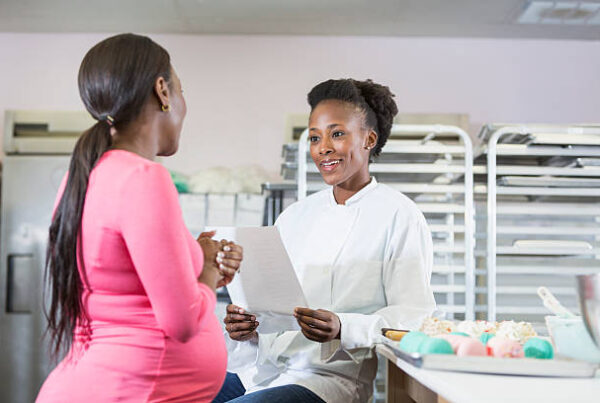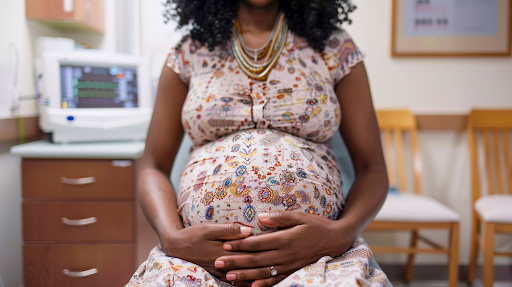If you are facing infertility, you may experience no symptoms. You may not have any reason to suspect that you are having infertility until you start trying to conceive.
For this reason, it’s often recommended that couples who’ve been trying to get pregnant for over a year without success should seek the advice of a doctor. For women over age 35, the timeline is reduced to six months. This is because infertility issues increase with age.
The signs and symptoms of infertility are often related to other underlying conditions. For instance, many untreated chlamydia cases often lead to pelvic inflammatory disease (PID) which can lead to a blockage of the fallopian tubes, which then prevents fertilization.
There are numerous conditions that can contribute to infertility in men and women. The signs and symptoms of each can vary greatly particularly for women.
Irregular periods is a major factor for women. The average woman’s cycle is 28 days long. But anything within a few days of that can be considered normal, as long as those cycles are consistent.
But if your cycles vary so greatly that you can’t even begin to estimate when your period might arrive is experiencing irregular periods. This can be related to hormone issues, or to polycystic ovarian syndrome (PCOS). Both of these can contribute to infertility.
Painful or heavy periods could also be an issue and while it is not uncommon to have an off month here and there, if you haven’t had a period in months, it’s time to get your fertility checked.
Hormone fluctuations in women could also indicate potential issues with fertility and you would need to consult with your doctor if you experience symptoms such as skin issues, reduced sex drive, facial hair growth, thinning hair, weight gain, etc.
There are some women that experience painful sex but it’s not normal. It could be related to hormone issues, to endometriosis, or to other underlying conditions that could also be contributing to infertility.
In men, hormone health and changes in virility, could indicate issues with fertility.
Problems with the testicles, maintaining erection, and issues with ejaculation are all relevant.
Around 1 in 5 couples trying to conceive will have trouble with infertility, according to clinical evidence. Female factor infertility is typically to blame 40 percent of the time, while male factor infertility is the cause of issues 30 to 40 percent of the time. A combination of these factors leads to infertility 20 to 30 percent of the time.
There is a compelling argument for eggs. Women are born with all the immature egg follicles they’ll ever have — about 1 to 2 million, but only about 400,000 of those eggs remain at the start of menstruation, which occurs around age 12.
With each period, several hundred eggs are lost. Only the healthiest follicles will become mature eggs. The woman’s body breaks down and absorbs the rest. Males, on the other hand, continue to create new sperm for most of their adult lives.
For the woman, as the body ages, it has fewer follicles. That means the follicles have fewer opportunities to create healthy, strong eggs for fertilization. In the teenage years, the supply is robust, but by the late 30s and 40s, the supply is waning. However, that’s the age when more and more people are attempting to start a family.
Today, the average age of giving birth for the first time is 26-27 years. That age has been steadily increasing in recent years as parenthood is postpone.
If ever there was a “best” age to procreate purely from a physical standpoint, it would be 18-24.
Your body’s strongest ovarian follicles are the first to mature into eggs for ovulation, so the eggs you produce in your younger years are more likely to be high quality.
This fertility chance, also known as fecundity rate, will wax and wane through your life. It’s at its strongest in this younger age period. Between ages 20 and 30, the natural fertility rate each month is about 25 percent, it drops to below 10 percent after age 35.
With each passing year, your chance of naturally conceiving a child falls. But in your late 20s, your chance of getting pregnant without intervention remains fairly steady.
Couples under age 30 who are otherwise healthy are able to conceive in their first three months of trying 40 to 60 percent of the time. After age 30, the chances of getting pregnant begin to decrease every year.
If you’re trying to conceive and have been unsuccessful for at least three months, talk with your doctor. While most couples at this age will be able to have a baby without intervention, some guidance may be helpful.
In your early 30s, the chances you’ll be able to have a baby are still high. You still have a lot of high-quality eggs to offer, but your odds will start to decline steadily at this age. In your 30s, you’re about half as fertile as you are in your early 20s.
The greatest reduction in fertility is in the late 30s and early 40s. The chances that a female in her late 30s will be able to conceive spontaneously is about half that of a female in their early 20s.
At this age, the risks of chromosomal issues with eggs are higher. The risks increase with every additional year. That means the risks of miscarriage or abnormal pregnancy are higher.
It’s important to keep in mind, however, that while more individuals are giving birth at these ages, the overall percentage of births to older parents is still much lower than in younger ones. That’s due, in part, because it’s tougher to get pregnant if you’re over 40.
Today, people are waiting longer to start families. Because of advancements in fertility treatments, such as in vitro fertilization, these individuals often do succeed at getting pregnant at this later stage.
If you’ve been diagnosed with infertility, or fear you may have trouble conceiving in the future, you’re not alone.
While your natural window gradually closes with your age, fertility treatments may be able to extend your window and even make your chances of successful conception higher.





